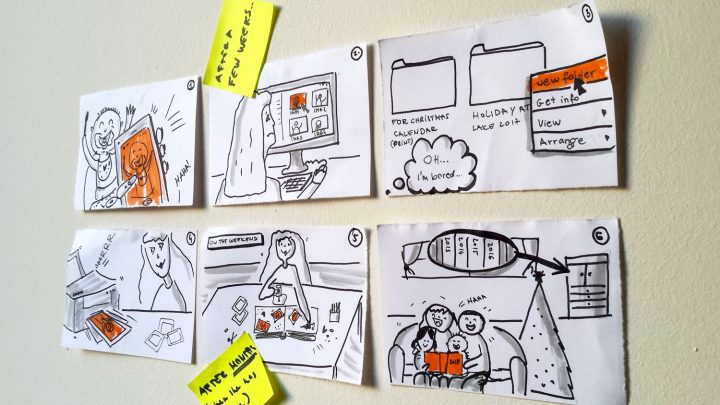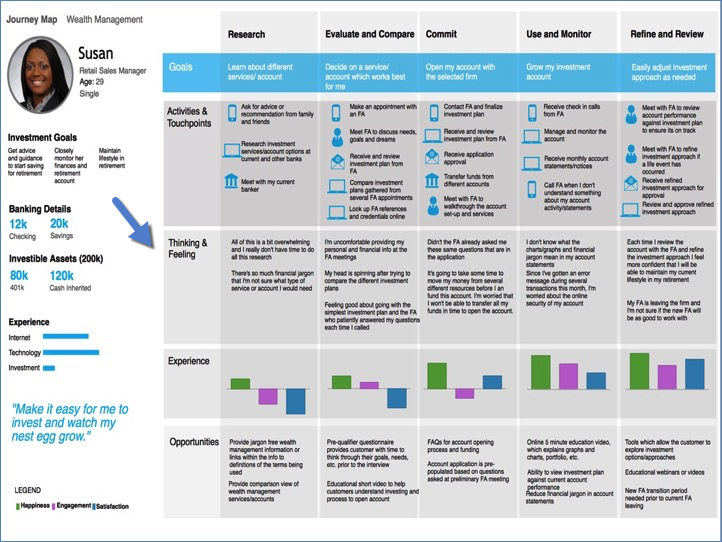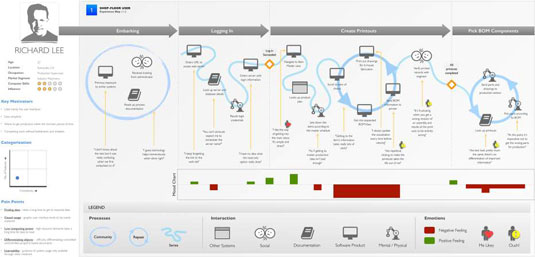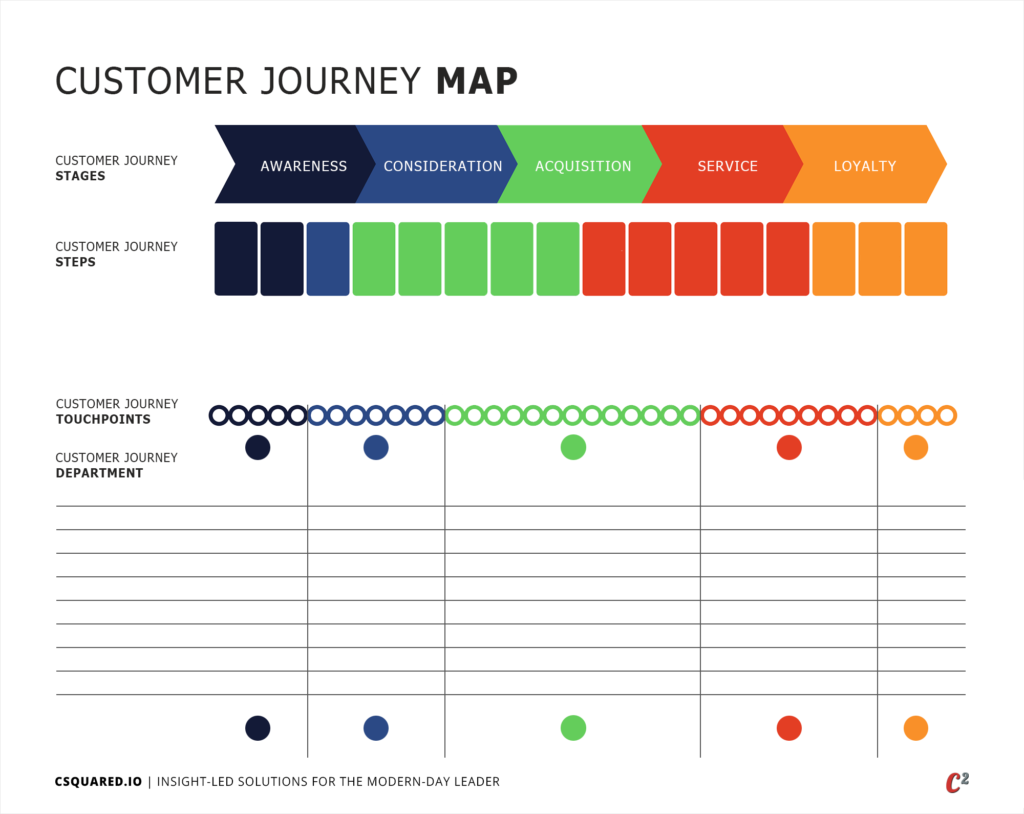
The process of Customer Journey Mapping is an integral part of product marketing that helps the product team identify all of the touchpoints, actions, and behaviors that a customer experiences in the journey before, during, and after the sale. Ideally, a customer journey map will serve as a blueprint for success and be updated as behaviors change for the buyer and seller. It may be useful to establish an ideal state for the touchpoints and then also have an actual state so that the product marketer can identify the gaps between the intended and current journeys for future improvement.
A Customer Journey Map is a tool that is developed by a Product Manager alongside a product roadmap and personas to articulate the end-to-end journey of the customer experience. This map can live in different iterations, depending on the particular use case it is going to serve.
Here are a few examples of how a customer journey map could be used:
- as guideline or narrative on the implementation of all touchpoints across an entire omnichannel experience for all personas
- as a UX roadmap for a future state of the online experience for all or a select few affected personas
- as baseline map to assess pain points in a specific point of customer interaction — like at the point of conversion
components: customer journey map
The components of a customer journey map can vary depending on the use case and goals. Here is a baseline of what a typical customer journey map includes.
AWARENESS: FIND A SOLUTION “I need…”
People in this phase of the journey are not yet prospects. As such, they are likely looking for broader terms and seeking to get a general landscape of what is available on the market. A journey map will outline the potential touchpoints that a person will engage with to become aware of the product or service. This could include: organic online or mobile search, paid search or advertising, email newsletters, events, social media, PR, radio, tv, and print.
INVESTIGATE: PRE-SALES “I’m considering…”
People in this phase of the journey are now considered prospects; these prospects are generally aware of available products or services and are advancing their depth of knowledge by looking more intently at specific features and options. If location is a factor in the purchase, customers also have geo-specific considerations at this phase. A journey map will outline the potential touchpoints that a person will engage with to investigate product or service. This could include physical canvasing (calling or traveling) organic searching for blogs and websites.
SELECT: PLACE ORDER “I’m buying…”
Prospects in this stage are ready to convert to a customer. Before they specifically make the purchase, their searches in this phase will be very specific, like including physical product names and models, locations, store names, etc. A journey map will outline the potential touchpoints that a person will engage with as they make their final selection and complete the purchase. In today’s digital world, this is where the customer likely will have the first interaction with a sales rep unless they encounter them during the investigation stage of searching. Other touchpoints include account signup on a website and completing the sale at the relevant point of purchase.
RETENTION: SEEK HELP “I need help with …”
Customer experience in the retention phase will vary greatly based on the type of product or service they have purchased. The touchpoints could involve customer service questions about how to use something they purchased, and they will also receive promotional solicitations or retargeting for future potential purchases. On the other hand, on-going / active customers will encounter touchpoints from customer service, as well as future potential promotions, purchases, or upgrades.
examples: customer journey map
Because a customer journey map will be customized to fit your specific needs, the design and layout of the final finished document will vary.
Here are a few examples of customer journey maps for different use cases.
Here are an example and a blank template of a Customer Journey Map that we like to recommend for getting started. Feel free to save and use!
Template: Customer Journey Map Completed Example: Customer Journey Map
what’s next?
A seamless customer experience is critical to the success of any B2B or B2C organization. When you’re ready to discuss how to get the best – and most – out of your customer experience process, give us a call at C2. “Removing obstacles to make the customer journey efficient and intuitive” is our middle name.








